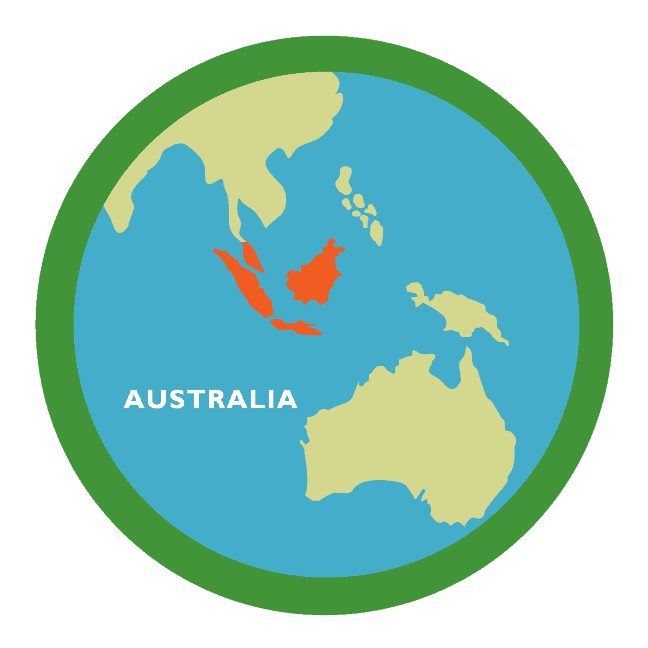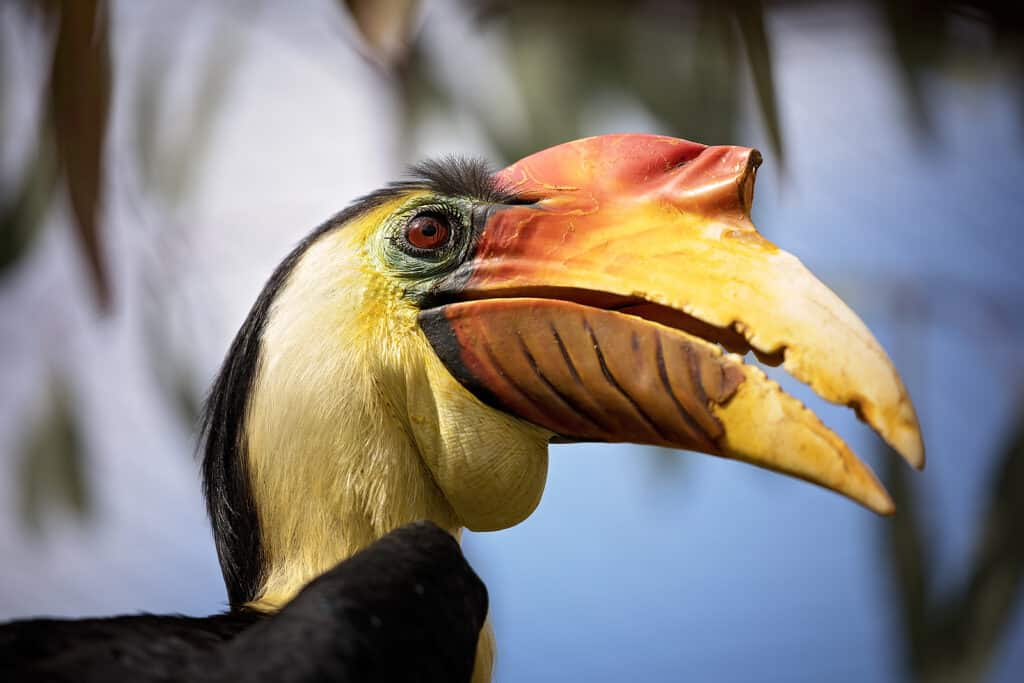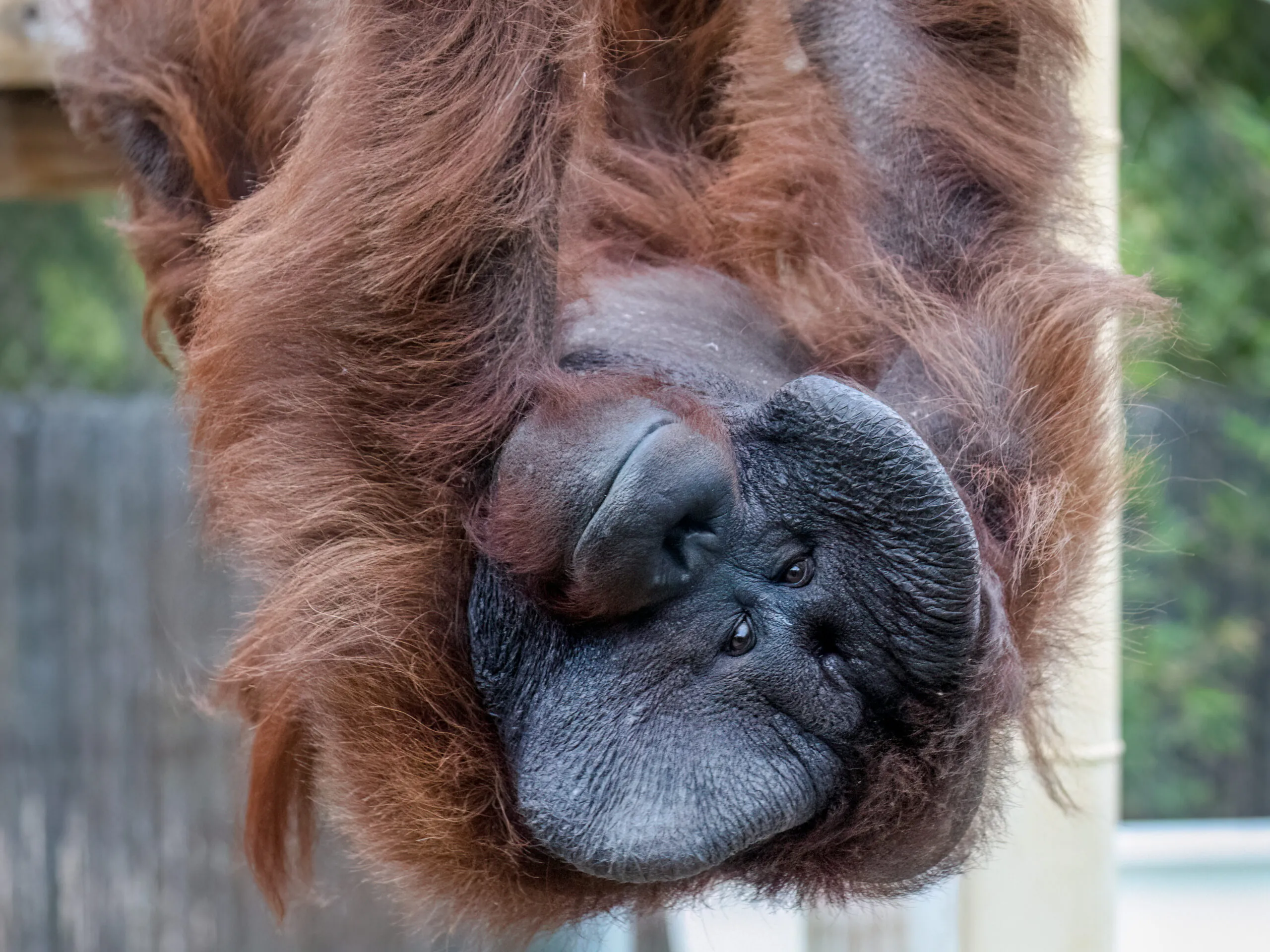Wrinkled Hornbill
Rhabdotorrhinus corrugatus
Big Flashy Helmets
The flashy, helmet-like structure on top of the bills of many hornbill species is called a casque. The casque grows throughout the bird’s life and, despite its large appearance, is hollow and very light. The living tissue inside the casque contains numerous blood vessels that help regulate body temperature. Hornbill calls reverberate through their casques, allowing them to communicate over large distances in the rainforest.
Pretty Makeup
Many bird species keep their feathers in a healthy condition by coating them in preen oil. The oil comes from the preen gland, found at the base of the bird’s tail. Wrinkled hornbills not only rub the oil on their feathers but also on their bill and casque, staining them red, orange and yellow. This creates a striking contrast to the blue facial skin that surrounds their eyes and is thought to be useful in attracting a mate.
Noisy Flyers
Most birds have feathers on the underside of their wings that help them cut through the air smoothly and quietly while in flight. Hornbill wings are bare on the underside and so create loud swooping sounds. Each hornbill species creates a different sound when flying, which is helpful when trying to identify them in the dense rainforest.

Diet: fruits, figs, insects, small animals
Zoo Diet: hornbill fruit salad, whole prey/mice
Habitat: lowland forests, swamps
Weight: 3 – 4 lbs



Plan your visit today!
The Phoenix Zoo is one of the largest non-profit zoos in the U.S., caring for over 3,000 animals, with nearly 400 species represented, including many threatened/endangered species.







